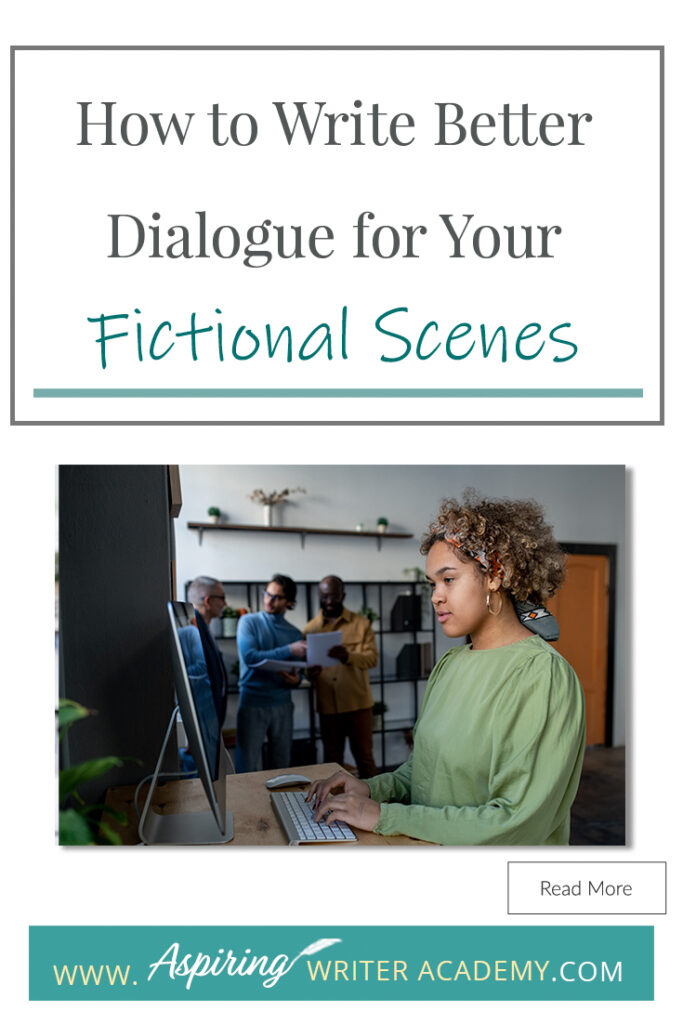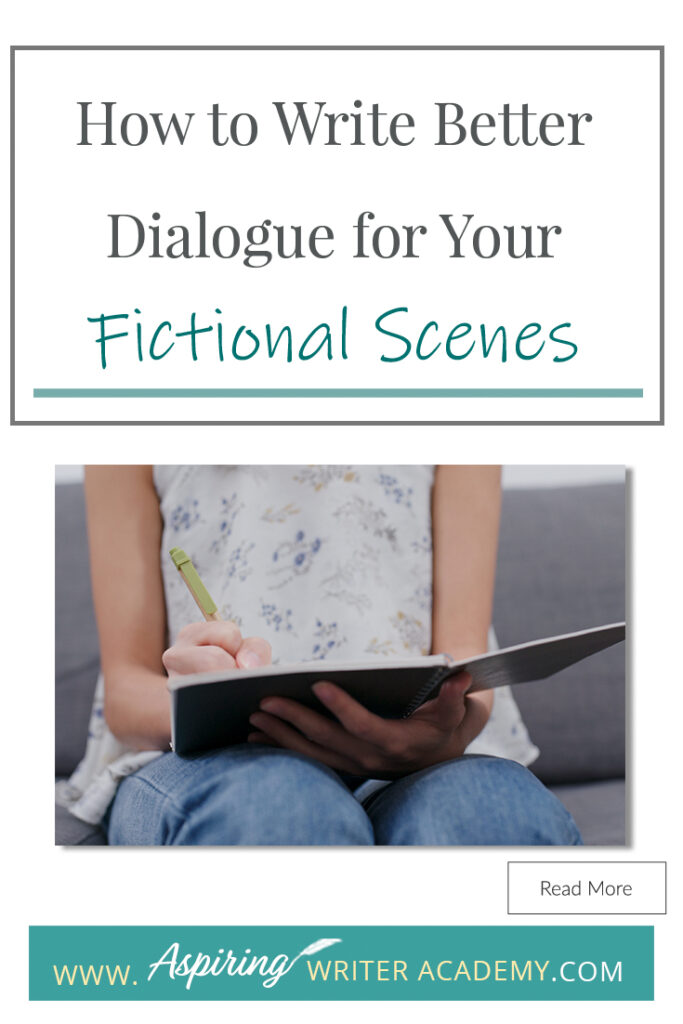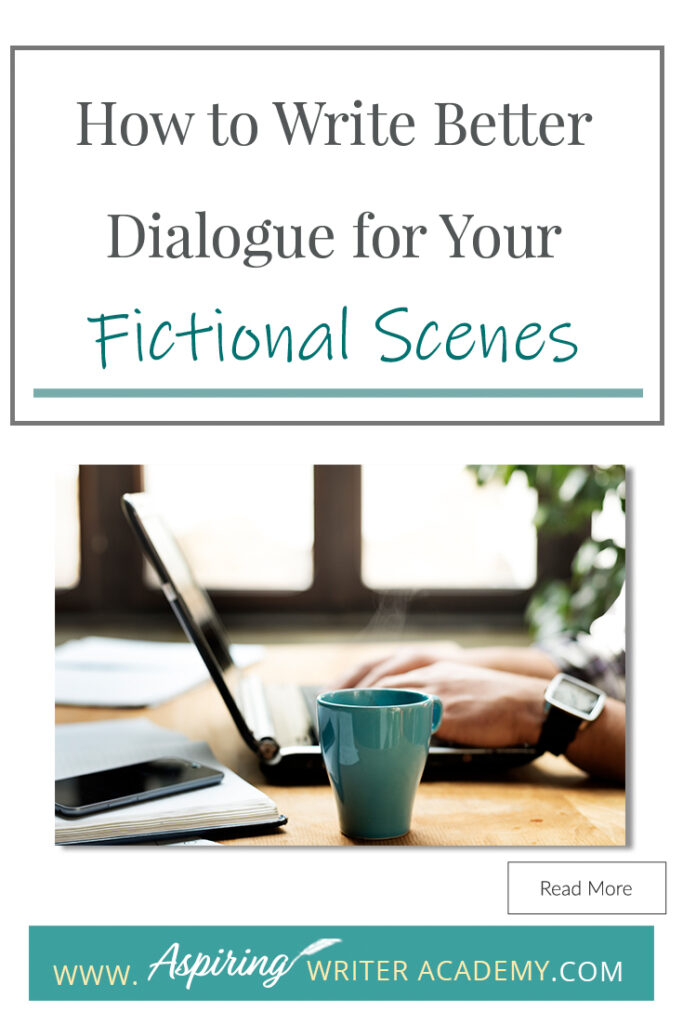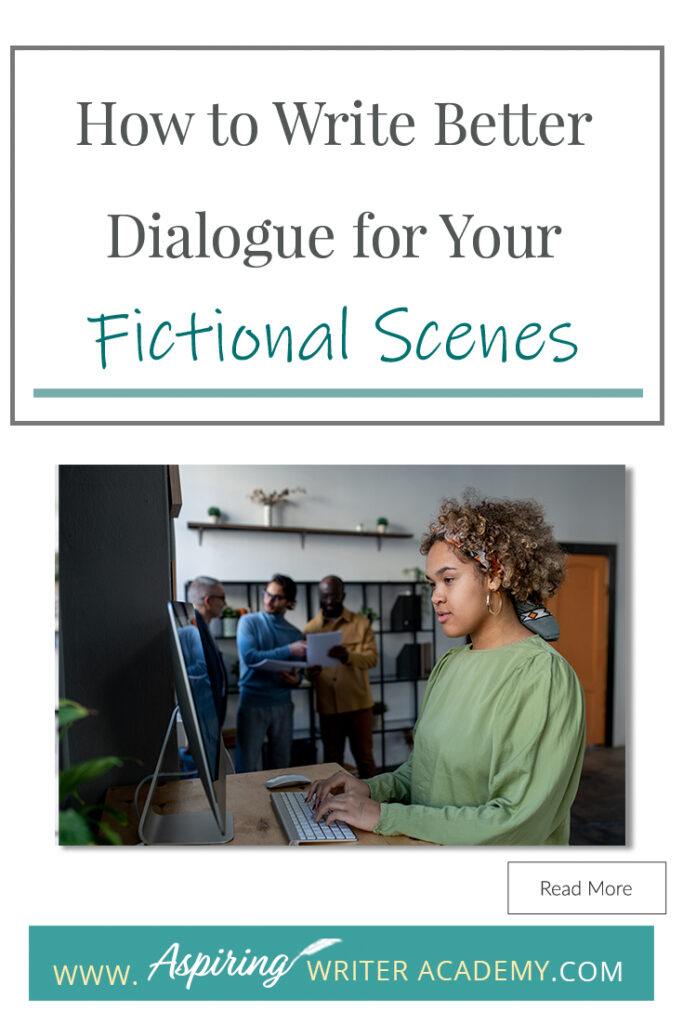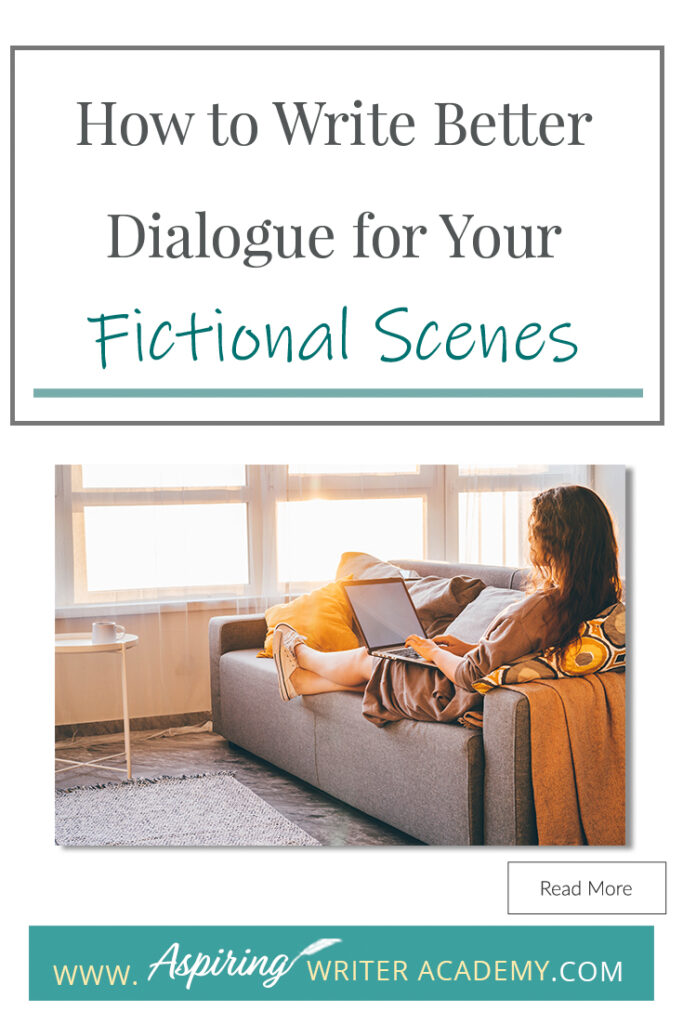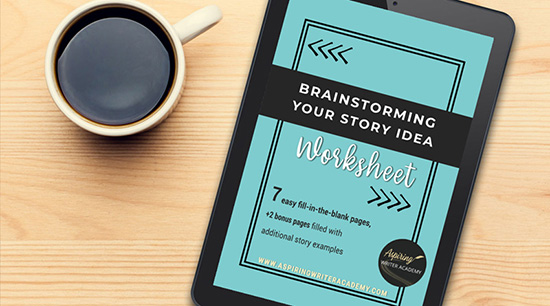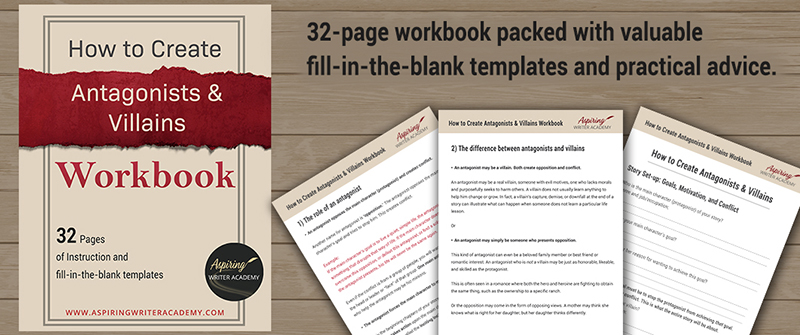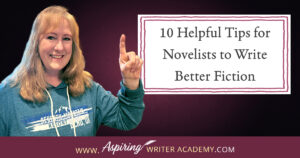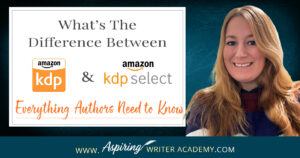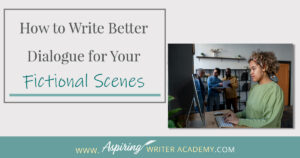How to Write Better Dialogue for Your Fictional Scenes
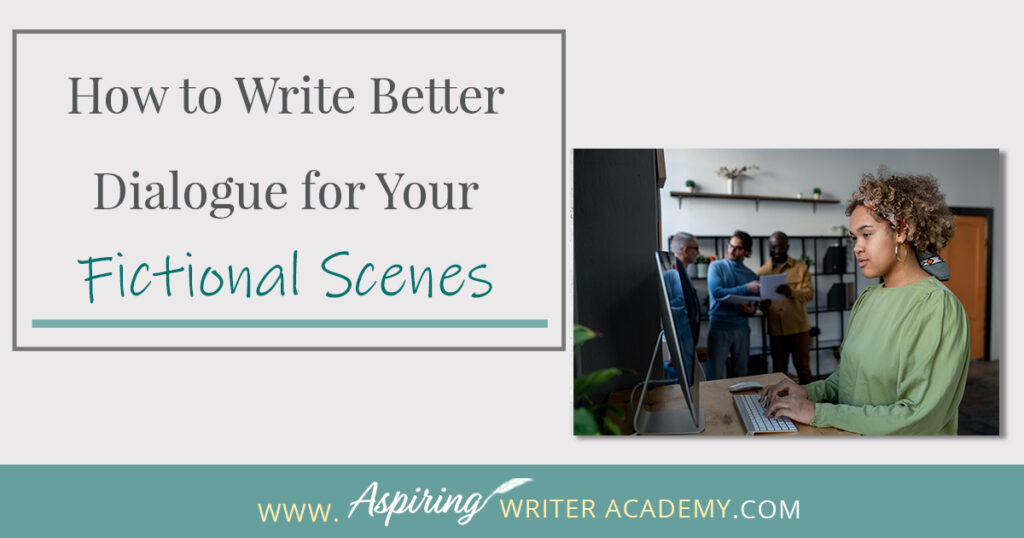
Do you struggle to craft engaging dialogue? Do your characters’ conversations feel flat and boring? Are you unsure if their speech effectively advances the plot? Are you wondering how to write witty banter or riveting hook lines to finish your scenes?
In How to Write Better Dialogue for Your Fictional Scenes we explore how to use dialogue to reveal your characters’ personalities and infuse your scenes with conflict and purpose.
In the post below we will discuss:
- Dialogue that Reflects Character POV and Personality
- Scene Goals and the Dialogue’s Purpose
- Witty Banter and Hook Lines
1) Dialogue that Reflects Character POV and Personality
Before you write a scene which includes dialogue, first think about:
Which character’s POV (point of view) are you using?
How does this character’s personality shine through their speech?
- Is your character defiant? Have him be defiant with his words.
- Is he meek and timid? Have him speak using meek and timid or evasive language.
- Is he bold and daring? Have him use dialogue that is bold and daring.
- Does this character have an accent, a speech impediment, a favorite word or phrase, or unusual tone or way of speaking that differentiates him from other characters?
Example:
In the classic story, “A Christmas Carol” by Charles Dickens, the main character, Ebenezer Scrooge, is notoriously famous for shouting, “Bah humbug!” when someone wishes him a Merry Christmas to show his disdain for the holiday that others joyously celebrate.
The reader knows exactly how he feels by what he says and how he says it.
Who is your POV character speaking to?
Emotion: How does your POV character feel about this other person? Is he angry at this person? Afraid of this person? Resentful? Bitter? In Love? Make sure your character’s words match their emotion, unless they are intentionally trying to hide their emotion from the other character.
How does the second character’s personality shine through their speech? Does this character have an accent, a speech impediment, a favorite word or phrase, or unusual tone or way of speaking that differentiates him from other characters?
2) Scene Goals and the Dialogue’s Purpose
What is the POV character’s goal for this scene? What is at stake? In other words, what is the purpose for the dialogue in this scene? What does the POV character hope to accomplish by speaking to someone else?
How does the second character’s goal (and dialogue) oppose the POV character?
Conflict: If this second character agrees with your POV character there is no conflict. But if this second character disagrees, you can have a lot of conflict (which is what you want for your story.)
Example:
One character wants to buy the POV character’s ranch. The POV character says no.
Or
The POV character wants a bank loan. The banker says no.
Or
The POV character wants the others in the group to follow his lead. The others in the group protest and say no, wanting to follow the advice of someone else.
Your scene should have at least (3) three back and forth exchanges (conflict) of dialogue and/or action. Don’t have the second person say “no” right away. Have the characters argue first, express different viewpoints and opinions before the final “no” at the end of the scene.
How does this exchange of dialogue complicate things for your POV character?
Ask Yourself:
What is the purpose of the dialogue in this scene between these two characters? Or group of characters?
Will it move the plot forward? (It should!)
Will it cause conflict for your POV character? (It should!)
Will it help reveal character personality? (It should!)
Will it help reveal the character’s lesson to be learned? Or reveal a strength or weakness/flaw? (It very well could!)
3) Witty Banter and Hook Lines
In dialogue, cut the mundane pleasantries of “How are you?” and “I’m fine, thank you” and dive right into the heart of the situation at hand.
Example:
A character walks straight into a room, sees another character in action, and demands, “What do you think you’re doing?”
Or start a scene by having one character already sitting in a room with another character who says, “He said what?”
Start the scene just after the action has begun. Start in the middle of things. Come into a scene late and leave early. You do not need to write how the conversation started or every detail from beginning to end. Just give us the juicy parts.
What does this character want? Have him use words to fight his opponent, or flirt with the girl, or chastise the person holding him back from achieving his goal, or to schmooze the security guard blocking his path to the forbidden cave!
Use banter between characters to debate the pros and cons of a situation.
How to write great banter:
Considering the POV character’s personality, mood, and his goals for this scene or greatest desire:
What is the best line of dialogue this character can say to the other in their current situation?
Now take your time with this and brainstorm: What is the best way the second character can respond? What can the second character say to throw the first character (and the reader) off guard or give them something they weren’t expecting?
Next, you need to come up with the best retort or response the first character can say to counter what was just said to him by the second character. Make a list. Cross off anything that is boring or expected. Go for the extraordinary or surprising. How can the character’s dialogue take the scene in a new or unexpected direction? What new information can be revealed?
If this is a romance, one character may use enticing language that tries to convince the other to deepen their relationship. Or if both characters are attracted to one another, what fun or unexpected things can they say to one another to show it? You may need to Google the art of flirting for extra help.
If you are writing an argument between two characters, each can present their differing opinions. If one character is trying to console, advise, or mentor another, what can they say to convince the other person or help them understand?
Most times in real life we do not get a chance to stop and craft the perfect reply. But in fiction, you can brainstorm, edit, and revise, until you come up with the perfect retort. The perfect phrase to say in each situation.
What is the best comeback line your POV character can say to his smug, snooty, opponent’s sarcasm?
What does he later wished he’d said but didn’t?
Or what did he say which he later regrets?
Let’s also take a look at the emotion and motivation for this banter: does one character want to hurt the other character? Or try to make the other character feel guilty? Is your character trying to get an apology from the other character?
Behind the words, what is the character trying to do? Punish the other character? Degrade the other character? Or sweet-talk the other character into accepting a favorable deal?
Again, where is the emotion in this scene? How can your character’s dialogue convey how they are feeling?
How does the concluding dialogue in this scene move the story forward? What is the last ‘zinger’ or riveting, challenging, thought-provoking line one character says to another at the end of this scene? Often called an ‘Exit line’ this is a short, to the point, phrase that digs deep and hooks the reader, often referred to as a ‘scene-ending hook’ or ‘hook line.’
Think of a comeback line that makes the reader think “Ouch!” or “Ooooh!”
Example:
In the 1998 movie “The Man in the Iron Mask” starring Leonardo DiCaprio, who plays a young arrogant king, he asks his Captain of the Guard if he has anything to worry about with the absence of the three former musketeers.
The Captain, D’Artagnan, assures the king that if the three men are up to something, they will not have to seek them out, the three will come to them.
The king haughtily responds, “Not if you find them first.”
This presents a real conflict for D’Artagnan, because these three musketeers were his former comrades, his closest friends. He can either betray his king or his friends.
This conflict (hard choice the character faces at the end of the scene) drives the story forward.
The reader/audience will want to know: how will this character handle this situation? What will he do next?
Look at the exit lines of your fictional scenes. How will the conclusion of the dialogue force the POV character to make a hard choice?
How will this ‘zinger’ line complicate things and cause tension, stress, and more conflict for your main character? Or hint at more hardship to come?
This is the Hook Line that will excite your readers and keep them turning pages!
We hope you have enjoyed How to Write Better Dialogue for Your Fictional Scenes and have gained some valuable tips to write dialogue full of conflict, personality, emotion, and meaning to move the plot forward and keep readers engaged!
If you have any questions or would like to leave a comment below, we would love to hear from you!
If you like more help developing your story, you may wish to download our Free Brainstorming Your Story Idea Worksheet
Do you find it difficult to create compelling antagonists and villains for your stories? Do your villains feel cartoonish and unbelievable? Do they lack motivation or a specific game plan? Discover the secrets to crafting villains that will stick with your readers long after they finish your story, with our How to Create Antagonists & Villains Workbook.
This 32-page instructional workbook is packed with valuable fill-in-the-blank templates and practical advice to help you create memorable and effective antagonists and villains. Whether you're a seasoned writer or just starting out, this workbook will take your writing to the next level.
We Believe All Authors Can Aspire to Take Their Writing to the Next Level!
Our Goal for Aspiring Writer Academy is to help people learn how to write quality fiction, teach them to publish and promote their work, and to give them the necessary tools to pursue a writing career.
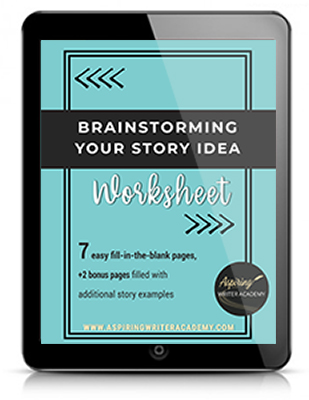
ENTER YOUR EMAIL BELOW
TO GET YOUR FREE
"Brainstorming Your Story Idea Worksheet"
7 easy fill-in-the-blank pages,
+ 2 bonus pages filled with additional story examples.
A valuable tool to develop story plots again and again.
Other Blog Posts You May Like
Scene & Sequel: The Secret to Plotting an Epic Novel
Scene & Sequel: The Secret to Plotting an Epic Novel (Part 2)
Writing Fiction: How to Develop Your Story Premise
12 Quick Tips to Write Dazzling Dialogue
10 Questions to Ask When Creating Characters for Your Story
Macro Edits: Looking at Your Story as a Whole
Basic Story Structure: How to Plot in 6 Steps
Writing Fiction: How To Keep Track of Time in Your Story
Behind the Scenes: Interview with the Authors of the “Sew in Love” Collection

is a multi-published author, speaker, and writing coach. She writes sweet contemporary, inspirational, and historical romance and loves teaching aspiring writers how to write quality fiction. Read her inspiring story of how she published her first book and launched a successful writing career.

